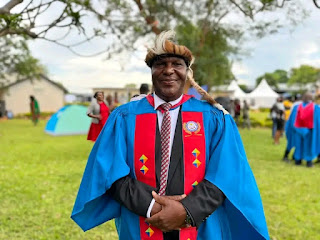INKOSI MNUKWA MADHLOPA HISTORY AND LIST OF RULERS
Under Inyandezulu, Inkosi YaMakhosi Mphezeni KaZwangendaba of Eastern Zambia, there is an Inkosi from the Madhlopa clan and his area of jurisdiction is commonly known as 'Chikenkhe cha Msang'ombe'.Thus, it is a common affair for Ngunis that are under Inkosi Mnukwa to simply state when asked who is their Inkosi, "I hail from Chikhenke Cha Msangombe". But who really was Mnukwa Madhlopa and why is now an Inkosi under the decorated aMazwangenaba Kingdom of Mphezeni?
The Journey from Nongoma in the South
The name Mnukwa is Nguni and it means 'The Suspect'. Here we can add that the name Mnukwa is a name the giver wanted to level an allegation through his name.
Old documents or indeed manuscripts on the Mphezeni Kingdom mention the name 'Mnukwa Mazyopa' (the Madhlopas of Zambia now use this corrupted version of their surname) and it is stated he was a key ally of King Mphezeni 1 and was in charge of passing judgement on those suspected to have been practicing witchcraft or had bad spirits. The short but intriguing notes on Mnukwa state that it was Mnukwa who was the final judge on whether one with a 'bad spirt' would be killed or they would reform once the bad spirits were exorcised from them. In other words, one may conclude that Mnukwa was the Induna of King Mphezeni tasked with ensuring the Kingdom was free from 'Bad Spirits'.
Although the document in question does not necessarily say, where Mnukwa Madhlopa came from, one is able to ascertain that their ancestral home in the North of Zululand, in the Nongoma area, for even today they are still there. They are an offshoot of the Zwides as even in their isithakazelo they mention Zwide. This fits perfectly in the picture given the fact that Zwangendaba KaHlatshwayo had an alliance with Zwide.which culminated into the Ndwandwe alliance. One may thus be correct to state that the people of Mnukwa Madhlopa came specifically from this area.
The town itself was only established in 1887 with the building of Fort Ivuna by the British as a buffer zone between the Zulu warring factions. It was originally called Ndwandwe but was later replaced by an earlier name given by the local tribesmen to the sacred area where the town stands: KwaNongoma ("place of the diviner or mother of songs").
Isithakazelo/Clan Names of Madhlopa
The Madhlopas after the death of Zwangendaba
In 1845, the Madhlopa clan were in a limbo after the death of the man who had inspired them to follow him on his great trek. After the death of Zwangendaba among the Ufipa people, supporters of his sons were almost starting a civil war as each wanted their preferred candidates to succeed the Great Nguni Leader who had built one of the most diverse Nguni empires in the history of the Abenguni states. Although the large chunk followed Mphezeni, also known as Ntutho, the eldest son of King Zwangendaba, some with the supporters of Lufo, another son of Zwangendaba from Queen Mkhlumane of Emsicweni village.
It was those under Mphezeni who flourished under Mnukwa Madhlopa to have scaled the power of the aMazwangendaba Kingdom and became a reputable clan. It is now clear when Mnukwa Madhlopa died or if his death preceded that of King Mphezeni. However, his principal wife came from Edingeni village also known as 'Soseya Nxumalo' village under Inkosi Mihlolo, also an Inkosi under Mphezeni in Eastern Zambia.
The Reign of Zibabo Madhlopa (Inkosi Mnukwa I) and shift to the outskirts of Chipata
By Inkosi Donald Madhlopa (Mnukwa IV)
As just explained in the preceding paragraph, Mnukwa's principal wife came from eDingeni village and its through her that Crown Prince Zibabo Madhlopa was born. Again there is not information on when he was born but we see that he is the recognized first Inkosi Mnukwa. Under his reign, Chikenkhe was well settled at Mgazini (Chimdima) where Gondar barracks and Chipata Airport are today in Chipata, formally Fort Jameson.
However, around 1936 Inkosi Mnukwa1 died and his son Zenase Madhlopa, the first born son from his frst wife Matolase Jele KaNtutho, who was a sister of Inkosi Maguya the first, ascended to the throne as Inkosi Mnukwa 2. Zenase had one brother Ferike and two sisters Memiwe and Mayase from their mother Matolase.







Comments
Post a Comment